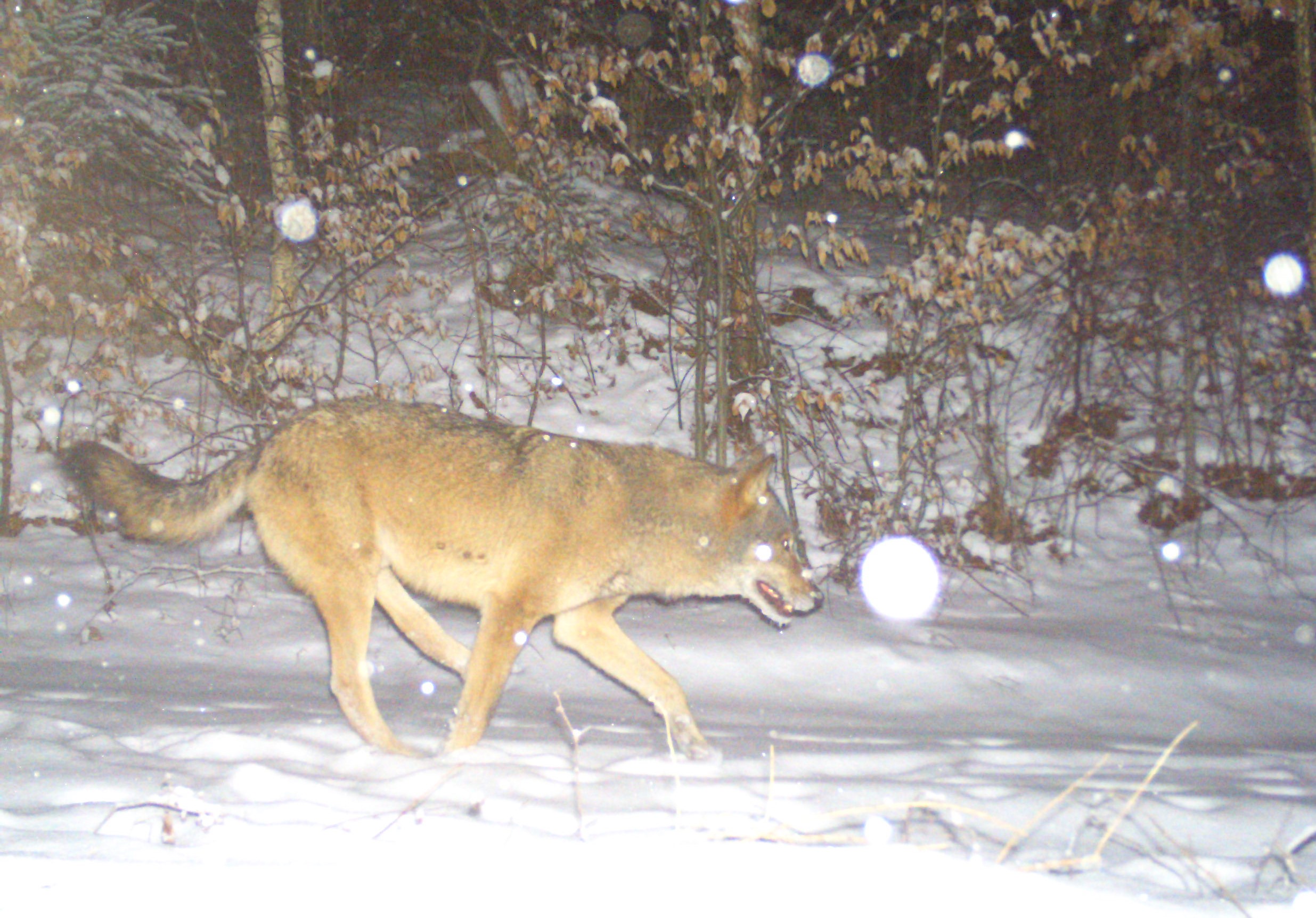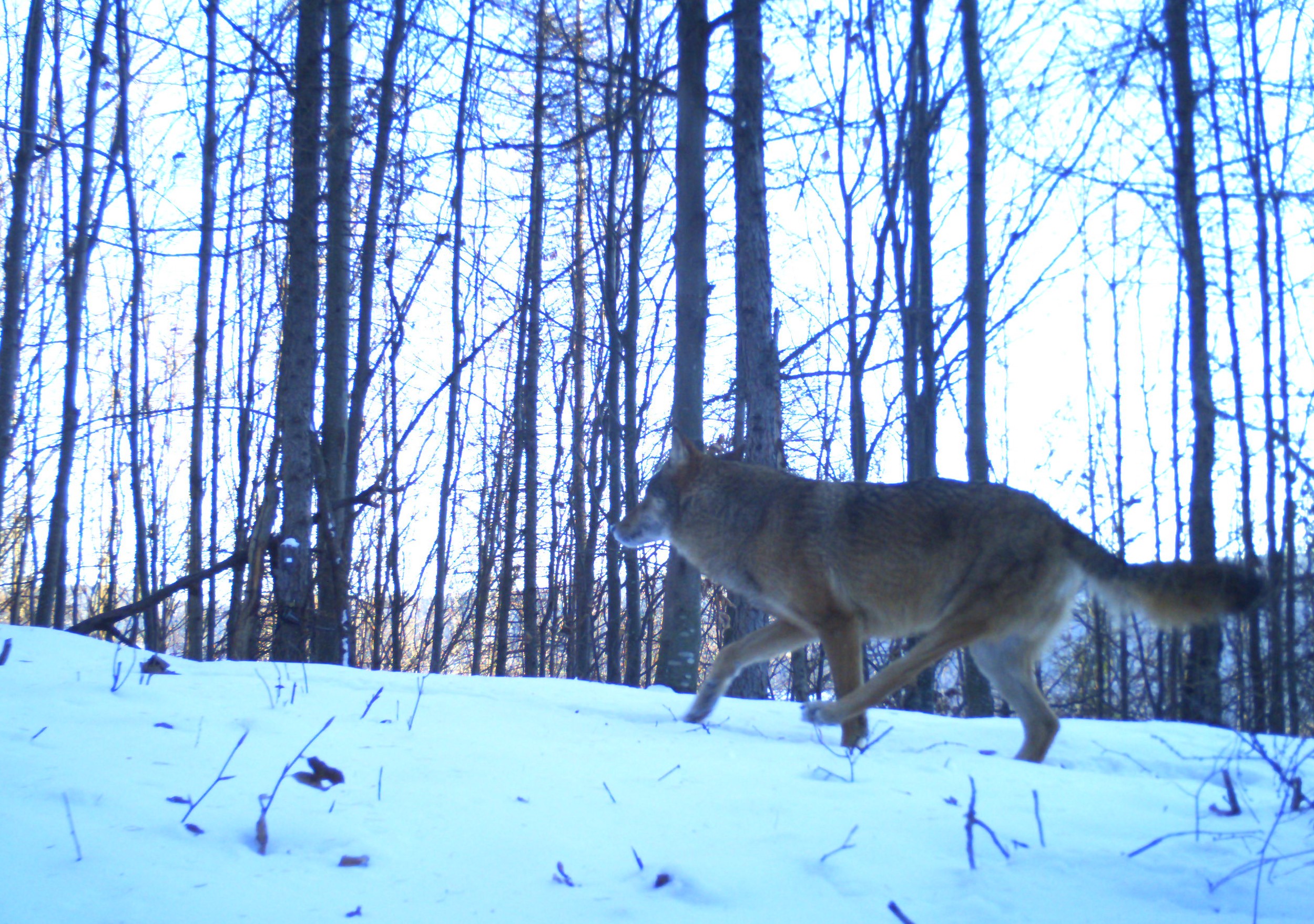ConnectGREEN - The story of a survivor: "Tripod" the three-legged wolf
16-04-2020
 April 2020. Slovakia, Muranska Planina National Park. Tripod is one of Slovakia's 300-600 wolves, but he is one who not only survived a car crash where he lost one leg, but continued life in the wilderness thanks to his pack, a pack which did not turn its back on him despite his disability.
April 2020. Slovakia, Muranska Planina National Park. Tripod is one of Slovakia's 300-600 wolves, but he is one who not only survived a car crash where he lost one leg, but continued life in the wilderness thanks to his pack, a pack which did not turn its back on him despite his disability.
The Story of “Tripod,” the Injured Wolf from Muranska Planina National Park, Slovakia
He Survived Thanks to his Pack
Wildlife, and in particular Europe’s last large pockets of large carnivores, face an ever increasing threat from human activity as their habitats are fragmented and destroyed by human transport (road, rail) and other infrastructure that rarely, if ever takes into account ecological corridors and migration routes.
There is about 300-600 wolves in Slovakia. This is the story of one of them who had, with high probability, an unfortunate meeting with a car. Tripod survived a car crash and continued life in the wilderness thanks to his pack, a pack which did not turn its back on him despite his disability.
“We recognised him immediately from the from camera trap video. He was member of larger wolf pack. It was hard to say if he was the alpha-wolf, but for sure he was one of the dominant wolves in pack. He looked very confident, but there was also something different about him. His back left leg was obviously injured and he was crippled,” says Jerguš Tesák, Large Carnivores Programme, WWF-Slovakia.
Zoologists closely analysed the wolf’s injury and agreed that the wolf had probably survived a car crash. Wolf got the name “Tripod”. “Tripod had an injured hip joint and could not use his crippled back left leg. We occasionally see three-legged animals in nature, often because they have lost a leg in a poacher’s trap. But this kind of injury is different than Tripod´s,” explains Jerguš Tesák.
The camera caught Tripod in the Muranska Planina National Park close to road I/66 from Banska Bystrica to Brezno, and then again to the south in Low Tatras National Park. According to the Slovak Road Administration, about 3000 cars per day travel the section of road where Tripod might cross it. Road transects the animal migration paths between protected areas and fractures ecological connectivity. Conservationists often find injured or dead animals on this section of road - European wildcats, deer, wild boars, badgers, many foxes, and occasionally large carnivores such as wolves, bears and lynx.
Tripod first appeared in a camera trap in 2015. It has been an interesting experience for zoologists to observe the chances and survival strategies of a disabled animal in the wild. “We saw him on video in winter, at the beginning of 2016. He was in poor condition, very skinny and losing his fur. We recognised him from his leg. It looked like it might be his last winter. But despite his poor condition he was still a member of the pack even if his role in the pack was not so important anymore. We could see it even from the food he was eating –bones and leftovers after the other pack members had finished,” says Jerguš Tesák.
- Here is a video from the end of the winter 2015/16 - Trojpod very skinny, losing his fur. Zoologists were afraid he may not survive through winter. © NP Muranska planina
Tripod probably survived because winter that year was not as severe as usual. The pictures and videos in the summer and autumn were more optimistic and showed him in better condition. His fur was back and he was not as skinny. “We were happy that he survived the winter and is doing well. But the cycle of nature does not stop. The next winter was already knocking on the door. We observed his three-leg print in the snow a few times, giving proof that he was still alive. But it was only in spring that we were lucky enough to see him on camera again,” says a zoologist from Muranska Planina National Park.
- Here is a video from Autumn 2016 shows Tripod in much better condition. © NP Muranska planina
 The last video of Tripod showing him crossing Hron River is from March 2018. Then he disappeared. “We can only presume his fate, but we know how tough animal he was. He survived in Slovak wilderness despite is handicap. And very probably thanks to his pack. Tripod couldn’t help them hunt anymore, but in spite of that, his pack didn’t push him way. His story says a lot about the importance of social relations in pack, how the cooperation of members is important for long-term survival,” explains Jerguš Tesák.
The last video of Tripod showing him crossing Hron River is from March 2018. Then he disappeared. “We can only presume his fate, but we know how tough animal he was. He survived in Slovak wilderness despite is handicap. And very probably thanks to his pack. Tripod couldn’t help them hunt anymore, but in spite of that, his pack didn’t push him way. His story says a lot about the importance of social relations in pack, how the cooperation of members is important for long-term survival,” explains Jerguš Tesák.
Tripod survived thanks to his pack, but could die because of humans. His story discloses the problem of ecological connectivity. Animals risk their lives crossing roads and railways to search for food, partners or new living territories on a daily basis. Thousands of them died annually on Slovakian roads and railway lines.
WWF Central and Eastern Europe’s ConnectGREEN project focuses on this problem. Some green bridges have been built over highways in Slovakia, and more are planned. More importantly, plans for future highways now include viaducts below to ease wildlife migration. However, green bridges or underpasses only help to maintain ecological connectivity if we know and protect the full length of ecological corridors from the initial planning phase. Migration corridors are still largely ignored during the infrastructure development decision-making process for the expansion of roads, rails, cities, villages and recreation zones. If we do not change our approach quickly, the long-term survival chances for large carnivores in our mountains will be severely limited.
Monitoring wolves in Muranska Planina National Park in south-east Slovakia is jointly conducted by the Slovak State Nature Conservancy, Matej Bel University’s Faculty of Natural Sciences in Banska Bystrica, and DIANA – Carpathian Wildlife Research.
